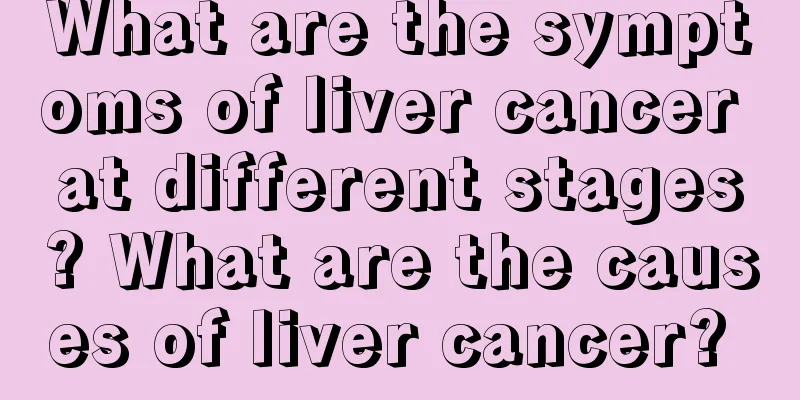How to distinguish between false strabismus and true strabismus?

|
Children are prone to strabismus, but some parents are unable to judge it because they do not have a thorough understanding of the symptoms of strabismus. Strabismus in children mainly occurs during the four months of infancy. Children will have intermittent strabismus, and parents can pay more attention to it. The epiglottis can also be observed. How to distinguish true from false strabismus in children? ①Intermittent esotropia in infants. It mainly occurs in infants within 4 months of birth. When the two eyes look at close objects, they converge and develop intermittent esotropia. After 4-6 months, when the eyes begin to adjust, the esotropia may disappear on its own. ②Internal extracellular skin. This condition is most easily mistaken for esotropia and is also the most common type of pseudostrabismus. This is because the epicanthus covers the inner part of the eye, and in severe cases it can cover part of the sclera, so that the sclera on the nasal side is less exposed than the temporal side. In addition, the baby's nose root is too wide, giving the baby a feeling of esotropia (cross-eyed) from the appearance. When the child's eyeballs turn left or right, the eye that turns inward becomes more obvious. The method of identification is to pinch up the skin at the root of the child's nose to expose more of the sclera on the nasal side, and the "esotropia" will disappear. In addition, the corneal reflection method can also be used, that is, use a flashlight to shine between the child's eyes to observe whether the light and shadow are in the middle of the cornea; or use the method of alternately covering one eye to check the eye position for identification. ③Pupillary distance is too small. When the distance between the two eye sockets and the pupil is too small, it will give people the feeling of esotropia. Experts say that pseudoexotropia is mainly caused by excessive pupil distance, which can cause a sense of exotropia. Pseudo-strabismus is often confused with true strabismus, and it is not easy to tell it is pseudo-strabismus at first glance. Even experienced clinicians have to conduct repeated examinations to make the correct judgment. How to help a child with strabismus 1. Remove inhibitions Strabismus and amblyopia (pediatric ophthalmology) mainly occur during the period of visual development and greatly inhibit the formation of visual function. Therefore, the basic task of treatment is to eliminate inhibition. Patching therapy is performed on the basis of solving refractive errors (ophthalmology). Its principle is to cover the healthy eye to force the use of the affected eye, eliminate monocular suppression, diplopia and confusion, and promote the recovery of visual function. 2. Improve vision Improving visual acuity is the fundamental purpose of treating strabismus and amblyopia (pediatric ophthalmology). Fine vision training can effectively promote the patient's visual development and achieve the effect of improving vision. Fine vision training includes needle threading, tracing and drawing, bead threading, etc. Patients can choose according to their own situation. 3. Correct eye position Correcting eye position is an important measure to eliminate diplopia in patients with strabismus and amblyopia and to prevent monocular suppression and amblyopia. For eye position correction, surgical and non-surgical treatments should be selected according to their nature in order to create conditions for restoring binocular single vision and enable binocular vision to develop normally. After eye position correction, visual function training should continue and changes in vision and eye position should be closely monitored. |
>>: How is an appendix abscess treated?
Recommend
Basic moves of street dance
For many people who want to learn dance but are t...
What is the best way to keep warm in winter?
It will feel particularly cold in the north in wi...
Does drinking coffee give you bad breath?
Coffee is a very common drink in our lives. Wheth...
What plants are best to grow indoors?
The weather is cold in autumn and winter. If you ...
What are the symptoms of insufficient blood supply to the brain? Treat them promptly if you find any symptoms
The most common symptom of insufficient blood sup...
How to quickly remove nail polish
Nail polish is the best choice for many girls who...
Can sinusitis be cured by laser?
Some patients with severe sinusitis can only unde...
4 lifestyle health care methods for prostate cancer patients during the recovery period. Recovery methods for prostate patients
We are all familiar with the word cancer, and pro...
Clinical staging of lymphoma
Pathological histological examination is the only...
What are the imaging tests for kidney cancer
The typical patient with renal cancer is a sporad...
What should I do if I have mild hydronephrosis of both kidneys
Even if there is mild hydronephrosis in both kidn...
Why is there blood when I wipe after urinating?
Urine is the "scavenger" of our body an...
What should be paid attention to in nursing after treatment of nasopharyngeal carcinoma
Nasopharyngeal carcinoma is one of the most commo...
What are the characteristics of liver cancer pain?
What are the characteristics of liver pain caused...
Superficial scar fading time
In life, no one is ever hurt, and bumps and bruis...









